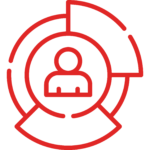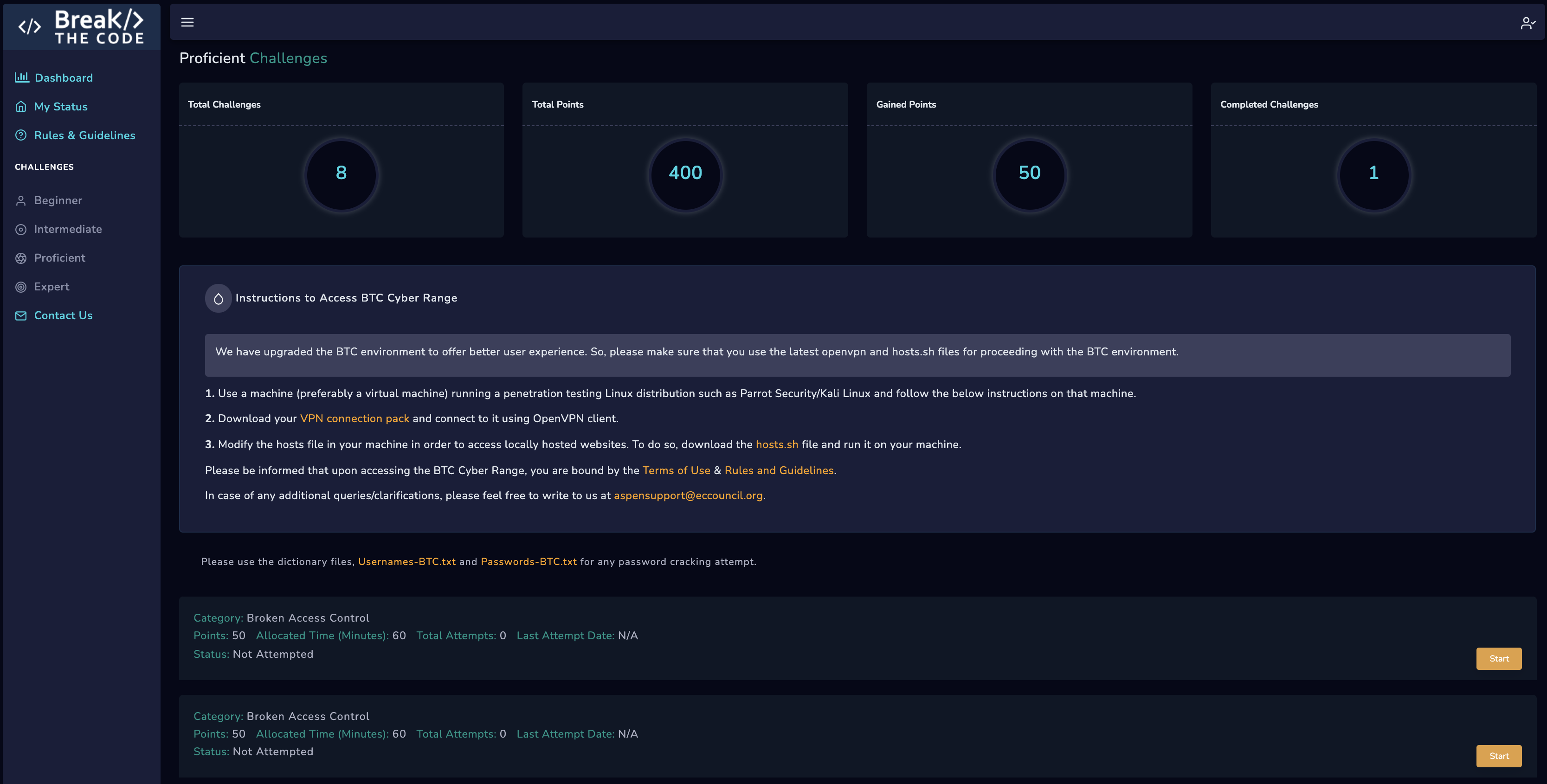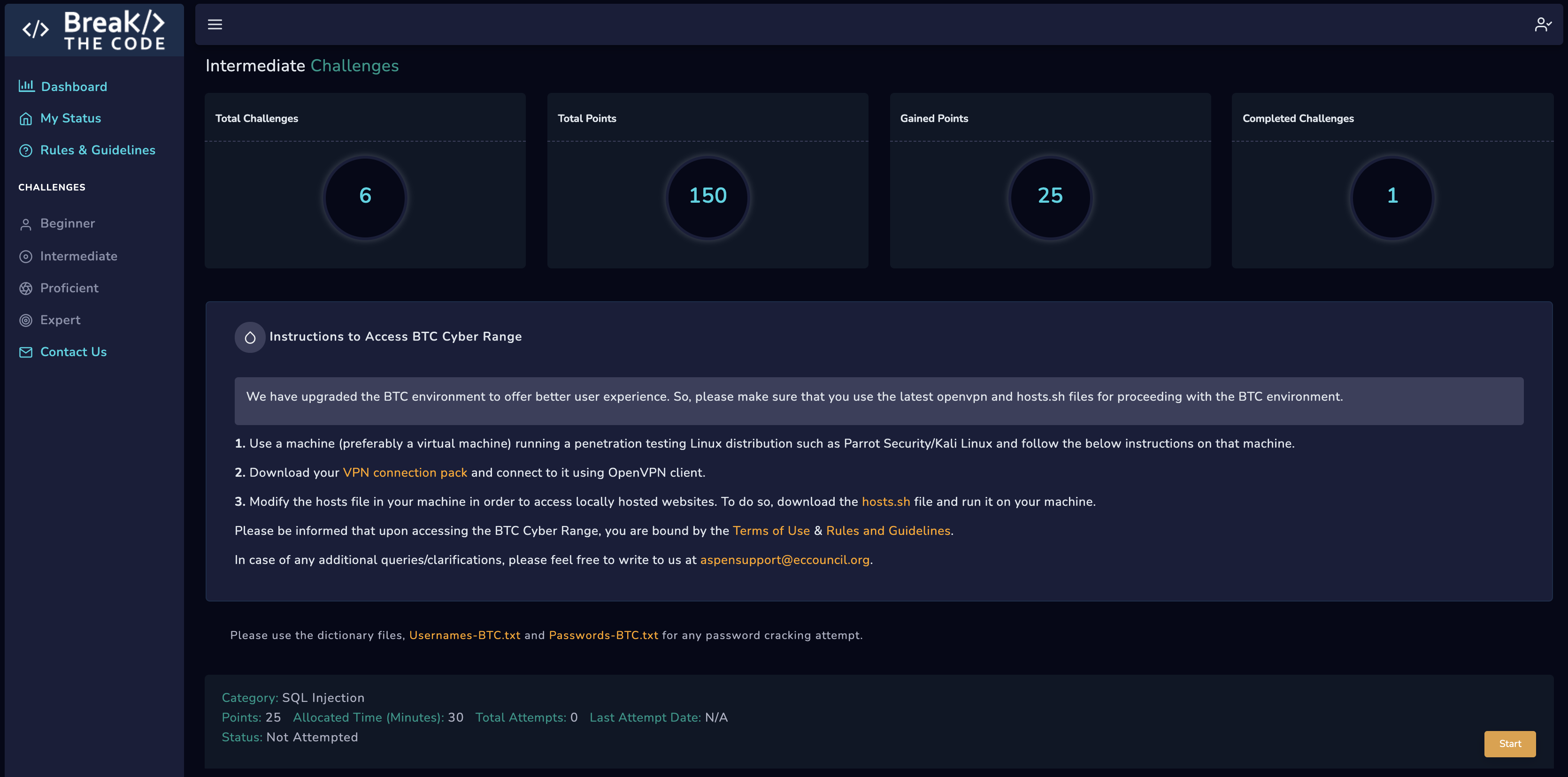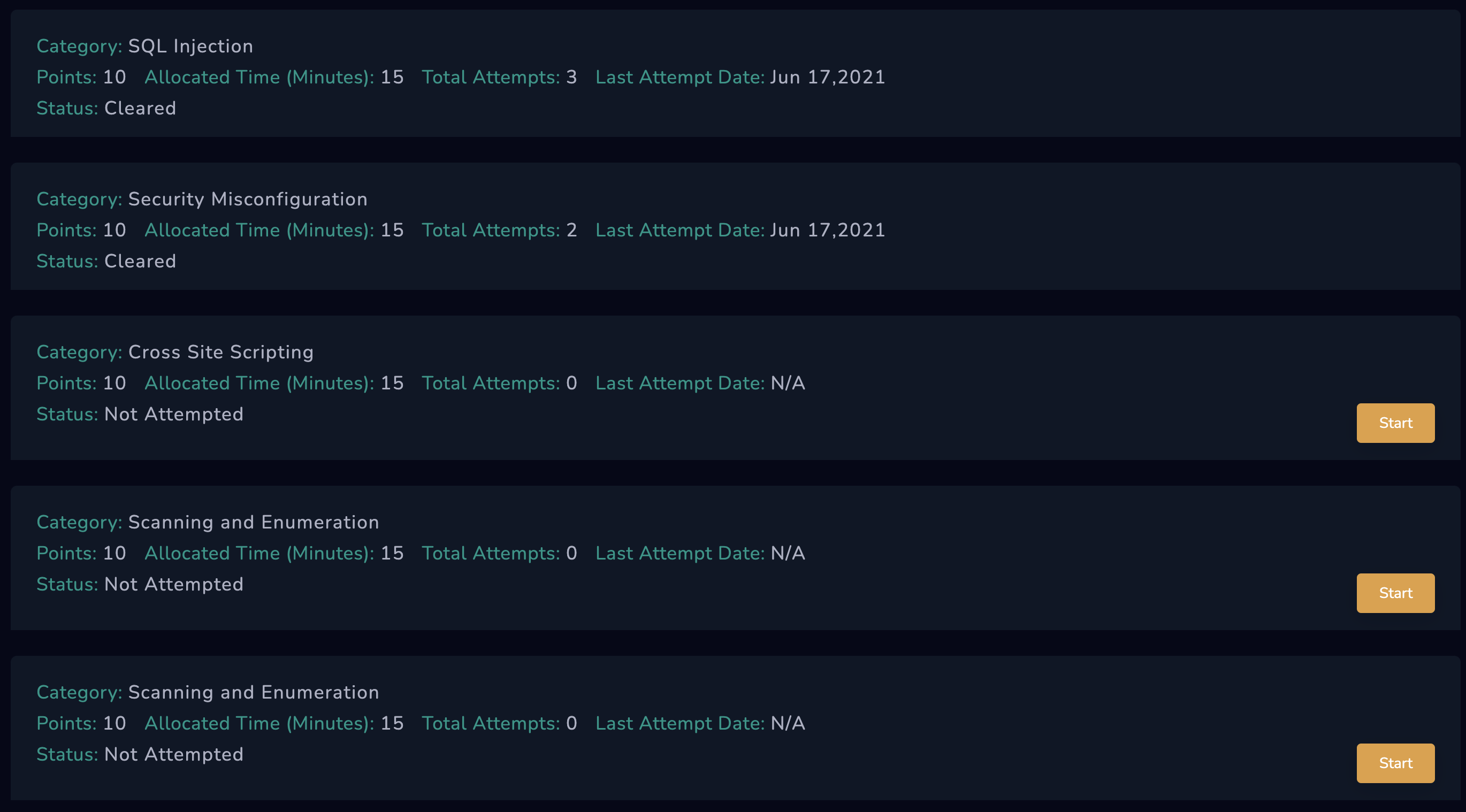
Web Application Hacking and Security Training Course – EC-Council iClass
Web Application
Hacking and Security
Understand, Exploit, And Defend Yourself Against Topmost Web Vulnerabilities With A Comprehensive Hands-On, Lab-Based, Guided, Mastery Course Designed By The Team That Brought You CEH

EC-Council’s Web Application Hacking and Security is a specialization certification that enables the cybersecurity workforce to learn, hack, test, and secure web applications from existing and emerging security threats in the industry verticals.
Decoding Web Application Hacking and Security
Web Application Hacking and Security has challenges derived from the engaging iLab environments of EC Council – from Certified Ethical Hacker (CEH) to the Certified Penetration Testing Professional (CPENT); from Certified Application Security Engineer (CASE) .Net to Java. But Web Application Hacking and Security goes beyond this to more difficult scenarios as you advance through each problem.
Web Application Hacking and Security is like a Capture-The-Flag (CTF) competitions meant to test your hacking skills. But you can keep on trying until you achieve the goal. Test your skills and work alone to solve complex problems or follow the instructor as they do a walkthroughs to help you learn Web Application Hacking and Security.
Watch your name rise on the leader board, a place where you’ll see who’s cracking the most challenges, who’s making the most progress, who’s cranking out the h@ck$!

Are you ready to get certified?
The Complete Hands-On Guide
to Web Application Hacking and Security
From the team that brought you the Certified Ethical Hacker

100% Performance based Course!

No Death by Powerpoint!

Learn by Doing!

Step By Step Video Instruction
Level up your Skills through Play
Challenges
You will encounter security misconfigurations, SQL injection vulnerabilities, directory browsing vulnerabilities, enumeration vulnerabilities, and opportunities to escalate privileges and gain access to privileged information.
Each section of ‘Break the Code’ brings progressively more difficult challenges. There are always multiple paths to take, but few will get you the prize and move up the leader board.

Learn by Doing
How You Will Learn:
Complete Walkthrough Instruction & Challenge Based Environment
Unlike many Capture-the-Flag challenges and Vulnerable Virtual Machines, Web Application Hacking and Security provides the challenger with the ability to follow an instructor as they make their way through the challenges. The instructor will present alternatives, do scans, upload malicious payloads, and crack passwords from their home computer just like you.
– But don’t rely on the walkthrough; challenge yourself and see how far you can get. Play some of the walkthroughs, then pause and try some more.
In the process, you will learn about application vulnerabilities and web application hacking. Even though this will prove useful for other CTF contests, and in cracking VVMs, it will be even more useful to your career as you learn to defend your applications and progress to Web Application Hacking and Security.
What you will learn:
- Advanced Web Application Penetration Testing
- Advanced SQL Injection (SQLi)
- Reflected, Stored and DOM-based Cross Site Scripting (XSS)
- Cross Site Request Forgery (CSRF) – GET and POST Methods
- Server-Side Request Forgery (SSRF)
- Security Misconfigurations
- Directory Browsing/Bruteforcing
- CMS Vulnerability Scanning
- Network Scanning
- Auth Bypass
- Web App Enumeration
- Dictionary Attack
- Insecure Direct Object Reference Prevention (IDOR)
- Broken Access Control
- Local File Inclusion (LFI)
- Remote File Inclusion (RFI)
- Arbitrary File Download
- Arbitrary File Upload
- Using Components with Known Vulnerabilities
- Command Injection
- Remote Code Execution
- File Tampering
- Privilege Escalation
- Log Poisoning
- Weak SSL Ciphers
- Cookie Modification
- Source Code Analysis
- HTTP Header modification
- Session Fixation
- Clickjacking
Prove Your Skills – Become A Certified Web Application Security Associate, A Professional, or An Expert
Web Application Hacking and Security Exam Description
The Web Application Hacking and Security program leads to a fully online, remotely proctored practical exam that challenges candidates through a grueling 6-hour performance-based, hands-on exam. The exam assesses candidates’ skills and proficiency on a broad spectrum of OWASP Top-10 web application vulnerabilities and attack vectors. The assessment is not limited to only understanding of automated exploitation frameworks but requires a deep understating of various web application technologies, their inherent and acquired vulnerabilities, and manual exploitation techniques.
The exam focuses on candidates’ proficiency in performing a web application security assessment in real life stressful scenario. Candidates who score more than 60% will earn the Certified Web Application Security Associate certification, candidates who score more than 75% will be awarded the Certified Web Application Professional certification and candidates who score more than 90% attain the prestigious Certified Web Application Expert certification!
Web Application Hacking and Security Exam Process Overview
Web Application Hacking and Security Exam is a fully online, remotely proctored practical exam that challenges candidates through a grueling 6-hour performance-based, hands-on exam.
- The Web Application Hacking and Security exam dashboard will be available for 30 days from your Aspen account. Launch your Exam Dashboard when you are ready to take on the exam.
- You will need to schedule the exam sessions and clear the exam from the Exam Dashboard within the validity period of 30 days.
- You will need a host machine with a virtual machine running your penetration testing toolkit to take the exam. Please read the Host System Requirement and Virtual Machine Resource Requirement sections below carefully.
Who Should Attend?
If you are tasked with implementing, managing, or protecting web applications, then this course is for you. If you are a cyber or tech professional who is interested in learning or recommending mitigation methods to a myriad of web security issues and want a pure hands-on program, then this is the course you have been waiting for.
- Penetration Tester
- Ethical Hacker
- Web Application Penetration
- Tester/Security Engineer
- Auditor
- Red Team Engineer
- Information Security Engineer
- Risk/Vulnerability Analyst
- Vulnerability Manager
- Incident responder
The Web Application Hacking and Security exam assesses candidates’ skills and proficiency on a broad spectrum of OWASP Top-10 web application vulnerabilities and attack vectors. Web Application Hacking and Security Exam is a fully online, remotely proctored practical exam that challenges candidates through a grueling 6-hour performance based, hands-on exam.
Certification
The exam focuses on candidates’ proficiency in performing a web application security assessment in real life stressful scenario. Candidates who score more than 60% will earn the Certified Web Application Security Associate certification, candidates who score more than 75% will be awarded the Certified Web Application Security Professional certification and candidates who score more than 90% attain the prestigious Certified Web Application Security Expert certification!

Exam Process
The Web Application Hacking and Security exam dashboard will be available for 30 days from your Aspen account. Launch your Exam Dashboard when you are ready to take on the exam.
You will need to schedule the exam sessions and clear the exam from the Exam Dashboard within the validity period of 30 days.
You will need a host machine with a virtual machine running your penetration testing toolkit to take the exam. Please read the Host System Requirement and Virtual Machine Resource Requirement sections below carefully.
Why Application Security Is Important
Most of the work we do on a day-to-day basis is done with cloud-based apps. Apps that are vulnerable to cyber-attacks.
There are currently 43,986 exploits in the Google Hacking Database and the total number of Common Vulnerabilities and Exposures (CVE) is at a record high with over 18,000 published in 2020. Now, with over 123,454 published vulnerabilities, it is important to learn to defend our applications. And there’s no better defence than a good offense.
Test your skills and learn to hack applications with Web Application Hacking and Security. Whether you are a beginner, or an experienced ethical hacker, Web Application Hacking and Security course offers something for all skill levels. You will hack through a variety of challenges from SQL Injection, to Security Misconfigurations, to cross-site-scripting, and more.
- Good understanding of web application working
- Basic working knowledge of the Linux command line
- Basic knowledge of OSes and file systems
- Basic knowledge of Bash and/or Python scripting
Minimum Hardware Requirements for the Host OS:
- CPU: Intel i3(3.6 GHz per core) 64-bit/AMD Ryzen 3(3.6 GHz per core)
- RAM: 8 GB
- HDD: 60 GB available space
- Peripherals: External or Integrated Webcam
Software Requirements for the Host OS:
- Operating system: Windows 8.1 x64 or later/ MAC OSX
- Virtualization Software: Any latest solution such as VMware Player/VMware Workstation 8.0/VMware Fusion 7.0 or later, Hyper-V, VirtualBox
- Browser: Any modern browser such as Chrome, Firefox, Internet Explorer
- Internet: A stable Internet connection with a minimum of 5mbps Download and 1mbps Upload speeds. It is recommended to use hard-wired connection instead of wireless.
Your virtual machine should be able to run penetration testing Linux distribution such as Parrot Security/Kali Linux or your own penetration testing toolkit.
VPN Software: The virtual machine should be installed with OpenVPN Connect client software. You can download it at https://openvpn.net/download-open-vpn/. The Parrot Security/Kali Linux distros come pre-installed with the OpenVPN client.










